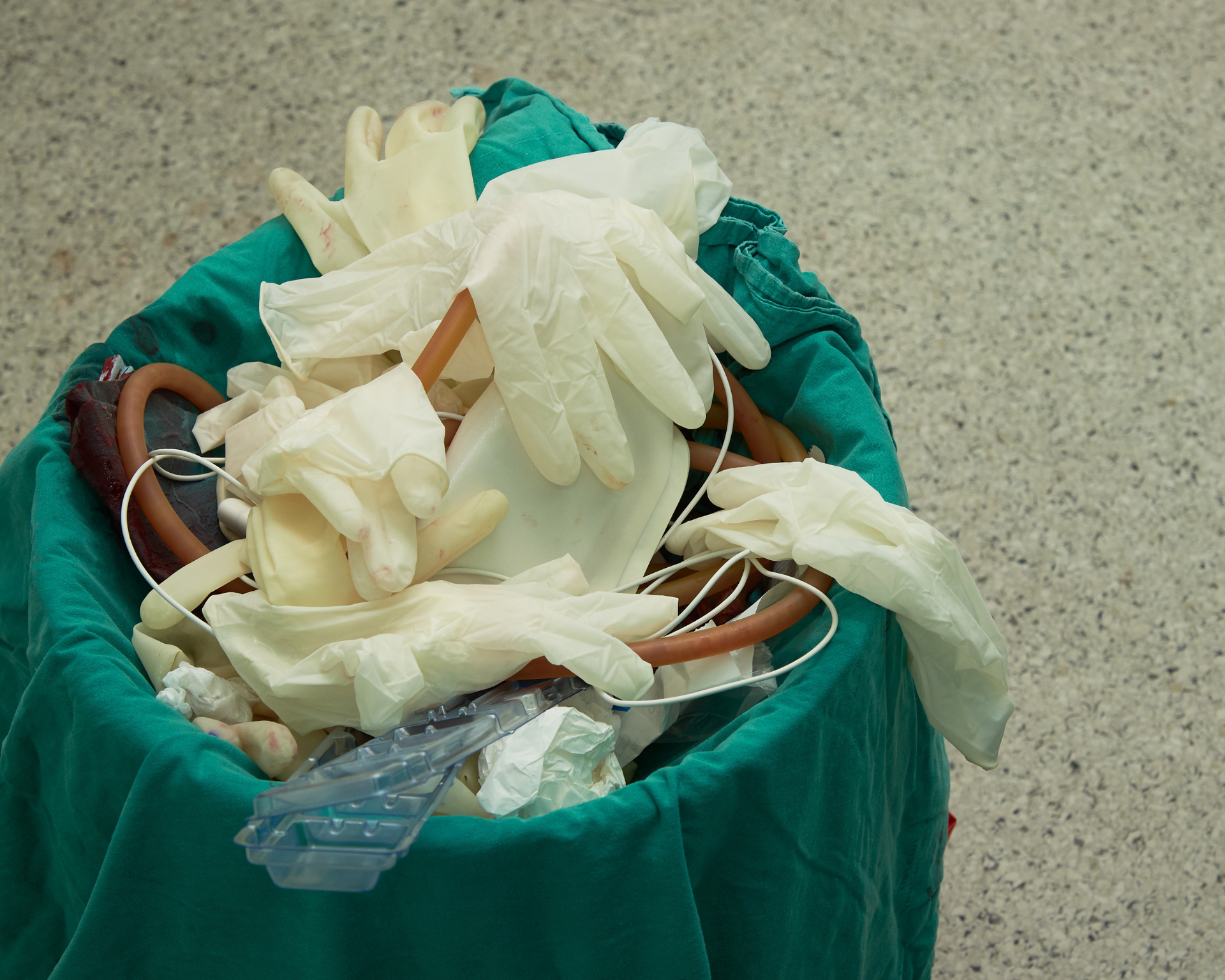The Story of Surgical Trash
A single patient in a U.S. hospital generates around 42 pounds of waste per day. Where does all this trash go, and why does it matter?

Read Time: 4 minutes
Published:
Of all the questions I have fielded from patients, I have never been asked if I threw away my surgical instruments, but the answer would always be yes. When it comes to our own health, the environmental impact is not even an afterthought.
As an OB/GYN, in the process of delivering thousands of babies and removing countless wayward organs, I have left behind a mountain of complex medical waste that will far outlive my patients and me. This waste magically disappears from my operating room within minutes of being generated, as the room is scrubbed down by a team of surgical assistants to prepare for the next patient. In a recent review published in Current Opinion in Obstetrics and Gynecology, my colleagues and I looked at where this waste goes, why that matters, and what we can do about it.
The first thing to know about medical waste is that there is a lot of it. A single patient in a U.S. hospital generates around 42 pounds of waste per day. The operating room, which accounts for as much as 70% of a hospital’s total waste, is a major contributor. For example, a robotic hysterectomy averages 30 pounds of waste. In addition to the staggering quantity, the infectious nature of the material we produce creates unique challenges for cleaning and disposal. This requires additional autoclaving, sterilization, and sometimes incineration—all requiring energy and emitting pollution, which in itself impacts human health.
For busy hospitals burdened by financial and personnel limitations, throwing instruments away is simply easier.
The main driver of all this trash is our increasing reliance on disposable products. After a surgery, we throw away multiple complex robotic arms designed for 5-8 uses only. Our supplies flow in one direction from the point of manufacture to the bedside. Once it has served its purpose, it will end up incinerated or in a landfill. Health care is the second largest contributor to U.S. landfills, bested only by the food industry.
Complex disposable cameras, fiber optic devices, and surgical tools now dominate the surgical device market. For busy hospitals burdened by financial and personnel limitations, throwing instruments away is simply easier. Navigating the regulatory burden associated with sterilization, repackaging and redistributing supplies overwhelms staff and is a frequent source of seemingly capricious regulatory citations. Despite their best efforts, hospital management feels like they can’t steer clear of citations, and footing the bill for disposables is the path of least resistance.
Even as the mountains of surgical trash pile higher, recent extreme weather events have highlighted how fragile our supply chain can become. We have faced major shortages of basic disposable supplies like IV tubing, gloves, and masks. This problem will only get worse.
Reducing our reliance on disposability will make us healthier as it strengthens our health care system and improves our planetary health. Many successful strategies have been employed on a small scale to reduce this waste. Reducing unused, but opened, supplies can reduce surgical waste by up to 20%. Optimizing reusable containers, maximizing the use of outpatient surgical centers, and strategies favoring durable reusables over disposables have all been successful.
Working towards a sustainable way of providing health care can reconnect clinicians with the purpose of practicing medicine in the first place.
Many sustainability efforts in operating rooms have focused on recycling. However, the vast majority of the environmental impact of a plastic surgical device occurs before it even reaches the surgeon’s hand. This means only a small percentage of the original embodied energy could be recovered in the best-case scenario. In addition, recycling is plagued by ‘aspirational recycling’ and mis-segregation.
Finally, a notable, but invisible, source of medical waste is anesthetic gases. The anesthetic gas desflurane has a global warming potential 2,540 times higher than carbon dioxide, and it is vented to the atmosphere from our hospital roofs. Efforts to reduce the use of such gases are essential for reducing the OR’s carbon footprint. Some countries, like Scotland, have already banned desflurane, and the European Union plans to phase it out by 2026.
Although my patients are largely unaware of the trash produced to take care of them, my stewardship of the resources I use has direct effects on our planet and my own sense of joy at work. Working towards a sustainable way of providing health care can reconnect clinicians with the purpose of practicing medicine in the first place.



